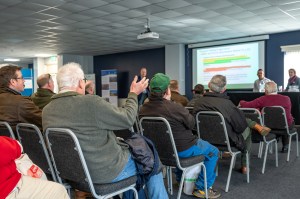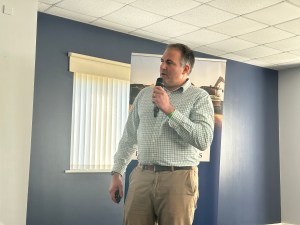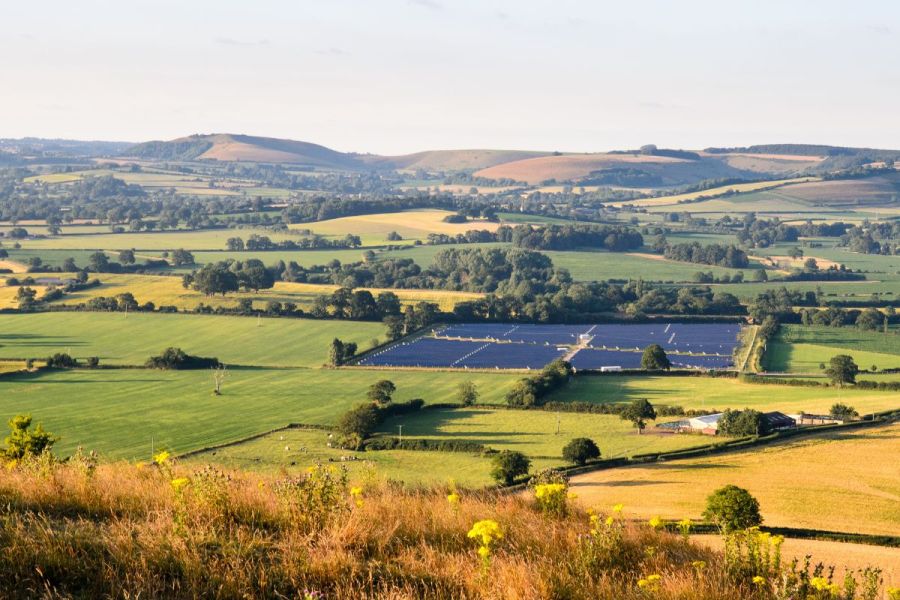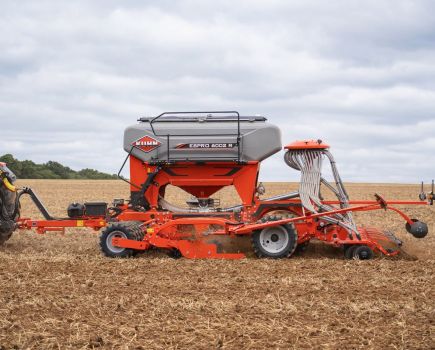The potential for renewable energy has never been greater but it demands some serious navigation. Following on from the article on the West Country Farming & Machinery Show in the March issue of CPM, this month covers the crackle of on-farm electricity.
“Just a small amount of shading on one panel can adversely affect the whole system.”
By Melanie Jenkins
It would be hard to scour each farm in the UK to find one that didn’t have a barn roof that could be utilised for solar energy, so why aren’t there more with photovoltaic (PV) panels on the roof?
Speaking at the West Country Farming and Machinery Show, held just outside Exeter in late February, Guy Gillmore of the Good Heating Company explains: “Solar has been around for a long while now, but people still tell me their roofs aren’t suitable because they aren’t south facing. But actually, orientation doesn’t matter that much. An east or west facing panel only loses about 10% compared with a south facing one and so are viable.”
But shading is massively important, he stresses. “Direct sunlight is what makes PVs make money. And just a small amount of shading on one panel can adversely affect the whole system.”

Audience members at the West Country Farming & Machinery Show listening to talks on solar installations and battery storage.
The best types of roofs for solar installations are made of tin and will provide the most pay-back, explains Guy. “The next best would be concrete tiles, then slate and clay tiles. In the case of the last two, a roof integrated system is advisable, whereby it’s quicker to strip the roof, lay trays and panels on these and then re-slate around the edge.”
But the big question about solar installations now relates to batteries, he says. “For years I’ve been telling customers not to rush into this as battery prices were dropping all the time, but now this has switched. This is mainly because of last year’s Budget. Before this, every battery system would incur 20% VAT no matter what, but as of April last year this changed.
“Now, if you install solar at the same time as your battery, the whole system will be VAT free. This is a big game changer. But farmers may have already been running the system through the books and not paying VAT anyway.”
The other consideration is the rise in electricity prices. “This has definitely made batteries worthwhile. So if you’re thinking of solar, do consider batteries too. Plus, you can raise more revenue on your batteries by charging them at night during cheaper rate times.”
How much solar can be installed on a roof will be dictated by the local district network operator. “For most people with a single face supply, this will be 4kW. Even if you have a modern inverter with export limitation built into it, they’re only likely to allow you to go to maybe 8kW. So there’s a huge missed opportunity here, but I like to think this will change.”

The best types of roofs for solar installations are made of tin and will provide the most pay-back, explains Guy Gillmore.
With solar it’s all about the power – kilowatts – but with batteries there are two things to think about, advises Guy. “One is the kilowatts of the inverter – how fast the inverter can feed your house or business – and the second is the storage, which is measured in kilowatt hours. This is often confused. Run through the numbers, look at your electricity bill and how much you’re getting through every 24 hours, you won’t require a battery bigger than that amount unless you’ve plans that will mean you’ll be using more.
“And DC coupled batteries are the way to go, because the solar and batteries are treated as a single power source rather than two separate ones by the local district network operator,” he says.
But what about choosing an installer? “Don’t go to Google, rely on word of mouth,” advises Guy. “MCS are the certification body which oversees the whole renewable industry and I’d recommend using this as its website can direct you to your 10 most local installers, and I’d suggest going for a local firm.”
The industry is very highly regulated, he adds. “So if your installer goes off the radar, there are certification bodies which oversee the installers and these can be accessed through MCS.”
One such obstacle has been battery storage capacity, something which is still holding back other industries from developing further. But Stuart Bradshaw of Push Flex explains how batteries are now a viable option on farm having just completed the firm’s first commercial solar and storage project in the UK.
Working on a family farm in Fordham, Stuart set up Push Flex in 2011 and since then has developed and constructed a lot of projects around the UK, including field-scale and rooftop solar installations, including for Amazon and Silverstone.
But his work has also involved on-farm solar and storage set-ups. One such project has been on an East Anglia-based chicken farm, which has had two new sheds with biomass heating systems. The farm uses approximately 163kWh, but Stuart highlights that this was an estimate as the farm didn’t have the data. “A lot of our projects have to start with good data.”

Stuart Bradshaw’s work has involved on-farm solar and storage set-ups.
Despite this, the firm installed a 244kW solar array with the aim of the farm being off grid for seven or eight months of the year, he explains. “The simple economics here are this: you can make electricity from the sun for 4p/unit and put it in batteries for about 3.5p/unit, totaling 7.5p/unit.”
The farm will still use the grid and will be connected to it every day, but the battery will stop electricity coming in or going out. “Once the battery is full, there’s an export capacity on this site, so excess electricity can be exported as normal.”
The key thing about the equipment available for new projects compared with older technology is how the batteries are coupled to the installation, says Andy Khan of Push Flex. “This project was DC coupled, so the panels are directly connected to the batteries at DC and are charging them at DC before converting to AC to cover any consumption. Historically, a standard solar installation would have an AC coupled system, which has efficiency losses and more key components that add quite a lot of cost,” he explains.
The main difference with a DC coupled system is that optimisers are required. “These essentially connect a string of converters and optimise the voltage, DC to DC. So they take the voltage off the roof panels, switching on when the voltage hits 800V and this is what charges the battery, because batteries can’t have a fluctuating DC voltage.”
The main reason the system runs an 800V system is because this requires much smaller cables, whereas older 48V systems had to have cables that were four to five times the size of the newer ones, says Andy.
The farm had four battery banks installed, each with 108kWh of storage. Each unit weighs 50kg and is around the size of an American-style fridge freezer, he says.
An AC comms box computes data from the weather, the batteries, panels and farm consumption, automatically determining whether the batteries are going to charge, discharge or export to the grid. And this system is already set up ready to work with future developments, such as reacting to fluctuations in electricity prices, says Andy. “Everything we’re installing at the moment is future-proof, as we can see that in the next 12 months there’ll be capacity to create far more profit from these installations.”
The system is able to predict the likely energy production based on this information, adds Stuart. “It looks at your previous demand data and works out how much energy you’ll require tomorrow and then estimates any shortfalls. It’s also able to take pricing information from the market and determine the optimum time to charge the batteries.”
Some of the main questions relating to batteries the firm gets asked are relating to safety aspects and so the company fits its own container with air conditioning, temperature and humidity controls, meaning that the batteries are in the right environment, explains Andy. “But batteries are more robust than people think and can sit anywhere between 0˚C and 40˚C, but ideally this wants to be between 20˚C and 25˚C.”
The installation cost the poultry farm £335,000, which has an estimated payback of less than six years. It’s expected to last for over 25 years, but this could be more in the range of 30 to 40 years, with the batteries lasting 6000 cycles, according to Stuart. “If one cycle occurred per day, this would total 16 years.”
This article was taken from the latest issue of CPM. Read the article in full here.
For more articles like this, subscribe here.
Sign up for Crop Production Magazine’s FREE e-newsletter here.




